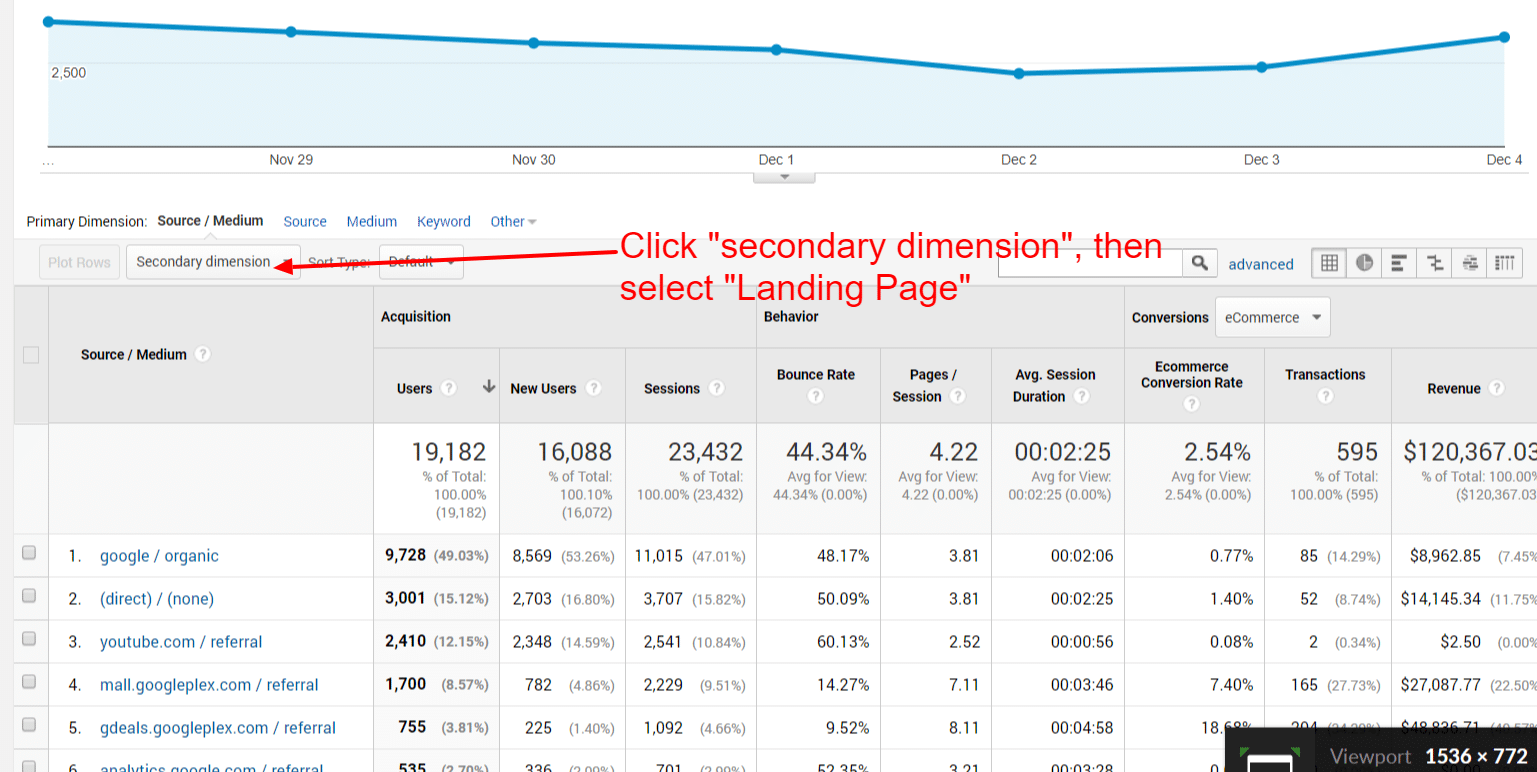Enhance Your Information Evaluation Making Use Of Additional Dimension in Google Analytics
Exploring the capacities of secondary measurements in Google Analytics opens up a realm of opportunities for refining data evaluation. By layering extra measurements onto main data collections, a more detailed narrative emerges, shedding light on user interactions and performance indications.
Comprehending Secondary Dimensions
In the realm of information evaluation, a crucial facet to grasp is the principle of additional measurements and their relevance in extracting much deeper insights from Google Analytics reports. Secondary dimensions in Google Analytics describe additional specifications that can be added to the main dimension, enabling for a more thorough analysis of information. By incorporating additional measurements, analysts can section and filter information to uncover patterns, trends, and relationships that might not appear when considering the data overall. These additional measurements can offer context and an extra comprehensive understanding of user behavior, web traffic resources, and various other key metrics tracked by Google Analytics.

Advantages of Utilizing Additional Measurements
When assessing data in Google Analytics, the application of additional measurements offers invaluable understandings right into individual habits and performance metrics. By including a second dimension to your primary data, you can dive much deeper into the attributes of your site site visitors and their communications.
Additionally, second measurements enhance the context of your main data, giving a much more extensive view of user interaction and efficiency metrics. In general, the use of second dimensions in Google Analytics can substantially enhance the depth and quality of your information analysis, leading to more enlightened decision-making and improved outcomes.
How to Add Second Dimensions
By integrating secondary dimensions in Google Analytics, individuals can acquire much deeper understandings into their information evaluation process, enabling for more comprehensive examination of individual behavior and efficiency metrics. Including second measurements is a straightforward process that can substantially boost the depth of analysis. To include a second dimension in Google Analytics, start by navigating to the record you intend to evaluate. When in the report, find the "Second dimension" tab above the information table. Click on it to expose a dropdown food selection with different options such as Behavior, Innovation, and Customized Dimensions. Select the dimension you intend to add, such as 'Source/Medium' or 'Gadget Category'. This second dimension will certainly then be put on your existing information, offering extra context and enabling an extra thorough evaluation of user communications. By making use of additional dimensions successfully, users can reveal important insights that may have otherwise been forgotten, causing notified decision-making and boosted efficiency methods.
Studying Data With Additional Dimensions
Using secondary measurements in data analysis supplies a much more thorough understanding of individual behavior and efficiency metrics. By adding an additional dimension to your primary data embeded in Google Analytics, you can dig deeper into the attributes of your web site visitors and their interactions. Incorporating the key measurement of 'source/medium' with the second dimension of 'landing page' can disclose which particular web pages are drawing in web traffic from different resources, helping you optimize these web pages for much better interaction.

Fundamentally, assessing data with second measurements equips you to get important understandings right into individual actions, determine patterns, and make informed decisions to boost the efficiency of your browse around this web-site digital properties.
Ideal Practices for Secondary Measurements
In data analysis, incorporating second measurements efficiently can substantially boost the deepness of insights acquired from metrics and customer actions patterns. When using secondary measurements in Google Analytics or any various other logical tool, it is crucial to adhere to best methods to make certain the precision and relevance of the data analysis.
One secret best technique is to very carefully select second dimensions that enhance the main dimension being evaluated. Selecting second measurements that provide extra context or more division can supply a much more extensive understanding of the data. It is also vital to avoid overcomplicating the evaluation by including way too many secondary measurements, which may lead to complication or dilution of insights.
Moreover, it is advisable to trying out different mixes of main and secondary dimensions to discover brand-new correlations and fads. On a regular basis evaluating and improving the choice of secondary dimensions based upon the certain objectives of the analysis can cause even more actionable insights. By complying with these ideal methods, data analysts can utilize secondary dimensions efficiently to boost the total data analysis process and decision-making capacities.

Verdict
Finally, integrating secondary dimensions in Google Analytics is vital for an extensive data analysis approach. By leveraging additional dimensions together with key ones, analysts and marketing professionals can discover valuable understandings and connections that can educate decision-making and enhance electronic advertising approaches. Comprehending exactly how to properly make use of secondary dimensions and complying with best techniques will certainly permit specialists to extract significant information and enhance their overall performance metrics.
Additional dimensions in Google Analytics refer to added specifications that can be added to the key dimension, enabling for a much more detailed analysis of information. By incorporating second dimensions, analysts can section and filter information to reveal patterns, trends, and relationships that could not be obvious when looking at the data as a whole. Incorporating the main measurement of 'source/medium' with the second dimension of content 'landing web page' can disclose which specific pages are attracting website traffic from various sources, assisting you maximize these pages for better involvement.
One key ideal method is to very carefully select secondary dimensions that enhance the main dimension being evaluated. By This Site complying with these ideal techniques, data experts can take advantage of secondary measurements properly to improve the total information evaluation procedure and decision-making abilities.